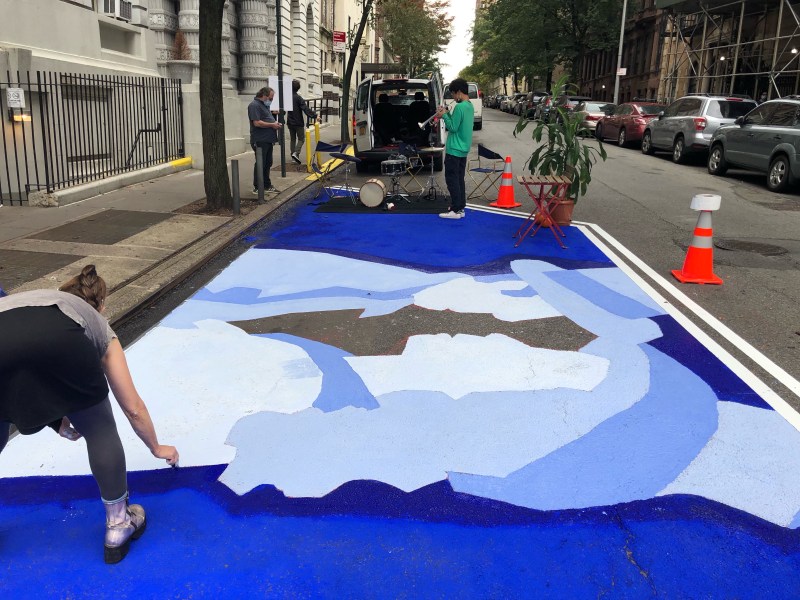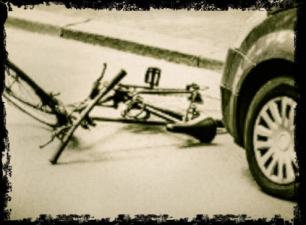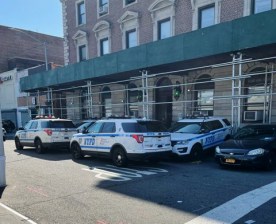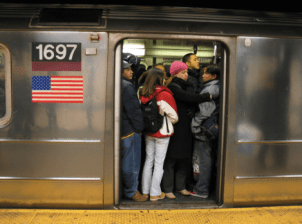Seeing the Future: W. 103rd Street Transformed in Pilot Open Space Project

Here’s looking at you, W. 103rd St.
Volunteers have once again shown the city Department of Transportation how easy — and how popular — it is to transform a roadway from a car sewer into a vibrant public space.
Residents and activists spent Friday morning turning two curbside spaces on the block of W. 103rd Street between Broadway and West End Avenue into a mural and a seating area that functioned also as a curb extension that made crossing the street simpler for seniors and also provided daylighting for drivers.
The mural featured Humphrey Bogart and Ingrid Bergman in a classic “Casablanca” pose. (Bogart lived at 245 W. 103rd St.)

The block is already part of the mayor’s COVID-19-era open streets program, but residents have not been widely using it because car drivers have continued their hegemony over the space. But the colorful bulbous and seating area show what can happen when underutilized space is activated for the public, rather than for car storage.
Janet Liff of Open Plans and Mike Lydon of the urban design firm Street Plans have been working on the demonstration project since October 2019 to benefit the block, where a large majority of households do not own cars.
“We drew up this vision [to] show how DOTs interim “shared street” concept could be used as a bridge to a more permanent and lasting redesign that is focused on delivering more public space, a better managed public realm (trash corrals, for one!) and to reduce the amount of total space afforded to parked and moving vehicles,” Lydon said, offering before-and-after renderings for a fuller project below. It’s amazing what you can do when you get rid of most of the cars:

The misuse of public space on W. 103rd St. is pretty common in New York’s urban center. Lydon’s surveys showed that the block between Broadway and West End Avenue accommodates 250 pedestrians per hour versus only 60 cars per hour in the roadway — yet pedestrians get only 20 percent of the property line to property line space. A full 80 percent is allocated to an 18-foot-wide vehicular lane, two eight-foot-wide parking lanes tree pits, garbage and, as Lydon put it, “other elements that limit space for people.”
The block is also home to The Marseille, a 134-unit senior residence with a pre-school in the building, plus a 24-unit NYCHA property.
“Even though Central and Riverside parks are relatively close, a number of seniors and children don’t have immediate access to open space,” Lydon said. The demonstration project advanced just one small piece of the overall project, but seeks to galvanize even more support for rethinking the corridor.”
It has support, as the Open Plans/Street Plans survey shows:

The demonstration project evokes an earlier effort by the Meatpacking Business Improvement District to show off how much better New York City’s open streets program could be with more restrictions on automobiles. As reported by Streetsblog, a weekend-long demonstration project on Little West 12th Street turned an otherwise dour and rarely used open street into a neighborhood gathering spot, which was, alas, gone after one weekend.



